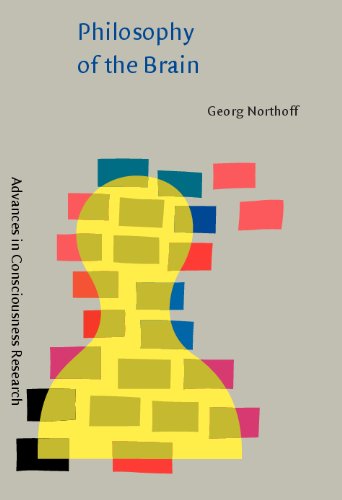Sarah E. Blackwell9789027251831, 90-272-5183-5, 90-272-5184-3
Table of contents :
Philosophy of the Brain……Page 2
Editorial page……Page 3
Title page……Page 4
LCC page……Page 5
Dedication page……Page 6
Table of contents……Page 8
Acknowledgements……Page 10
1.1.1. `Mind problems’ in the `philosophy of mind’……Page 12
1.1.2. `Brain Problem’ in the `philosophy of the brain’……Page 15
1.2. Definition of the brain and `dilemma of the brain’……Page 19
1.2.1. The definition of the brain……Page 20
1.2.2. The `dilemma of the brain’……Page 24
1.3.1. Defining `embedment’……Page 30
1.3.2. Defining `neurophilosophical hypothesis’……Page 31
1.3.3. Defining the brain……Page 33
1.3.4. Strategy of investigation……Page 34
1.4.1. Defining `Neurophilosophy’……Page 36
1.4.2. Principles of transdisciplinary methodology……Page 38
1.4.3. `Ontology’ and `epistemology’ in neurophilosophy……Page 48
1.4.4. `Neurophilosophical hypothesis’……Page 57
1.4.5. `Standard arguments’ against neurophilosophy……Page 63
Neuroepistemological account of the brain……Page 70
2.1.1. `Bodily embedment’: `Phenomenal space’……Page 72
2.1.2. `Individual embedment’: `Intra-subjective character’ of `phenomenal space’……Page 79
Neuroepistemological implications: Emotions and the `phenomenal-qualitative character’ of `phenomenal space’……Page 89
2.1.3. `Emotional embedment’: `Phenomenal-qualitative character’ of `phenomenal space’……Page 86
Spatio-emotional linkage and `phenomenal-qualitative character’ of `phenomenal space’……Page 91
2.2. `Temporal embedment’: The own body and other bodies……Page 93
2.2.1. `Environmental embedment’: `Phenomenal time’……Page 94
Neuroepistemological implications: Sensorimotor integration and `phenomenal time’……Page 96
The relationship between `phenomenal time’ and `physical time’……Page 99
2.2.2. `Intra-subjective embedment’: `Phenomenal judgment’……Page 101
Neuroepistemological implications: `Agency/action judgments’ and `phenomenal judgments’……Page 104
2.2.3. `Inter-subjective embedment’: `Physical judgment’……Page 108
Neuroepistemological implications: Observation of action and `physical judgments’……Page 110
2.3. `Mental embedment’: The brain and the own body……Page 115
2.3.1. `Goal-oriented embedment’: `Autoepistemic limitation’ and mental states……Page 116
Neuroepistemological implications: `Embedded coding’ and mental states……Page 122
2.3.2. `State-oriented embedment’: Feelings and qualia……Page 132
Neuroepistemological implications: Emotions and qualia……Page 134
2.3.3. `Act-oriented embedment’: Intentionality and mental causation……Page 142
Neuroepistemological implications: Intentionality and qualia……Page 145
2.4. `Reflexive embedment’: The own brain and other brains……Page 153
2.4.1. `Neural embedment’: First-Person Perspective……Page 154
Neuroepistemological implications: Imagery and First-Person Perspective……Page 156
2.4.2. `Personal embedment’: Second-Person Perspective……Page 163
Neuroepistemological implications: Autobiographical memory and Second-Person Perspective……Page 167
2.4.3. `Social embedment’: Third-Person Perspective……Page 174
Neuroepistemological implications: Social cognition and Third-Person Perspective……Page 177
3.1. Empirical hypothesis of the brain: `Dynamic brain’, `event coding’, and `embedded brain’……Page 186
3.1.1. The dynamic organisation of the brain……Page 187
3.1.2. The `dynamic brain’: `Dynamic states’ and `First-Brain Perspective’……Page 194
3.1.3. The `brain code’: `Event coding’ and the `empirical mind problem’……Page 202
`Mental presentation’ as `embedded representation’……Page 210
3.2. `Epistemology of the brain’: `Embedded epistemology’, `epistemology of events and environments’ and First-, Second-, and Third-Person Epistemology……Page 218
3.2.1. `First-Person Epistemology’ and `Embedded epistemology’……Page 220
3.2.2. `Second-Person Epistemology’ and consciousness……Page 251
3.2.3. `Third-Person Epistemology’ and thought/language……Page 262
3.3. `Ontology of the brain’: `Embedded brain’, `embedded ontology’ and `self-reference’ of the brain……Page 271
3.3.1. `Neuroontology’: Brain as an `isolated brain’……Page 273
3.3.2. `Neuroontology’: The brain as an `embedded brain’……Page 284
`Mental causation’ and `Dynamic causation’……Page 298
3.3.3. `Ontology of the brain’: `Embedded ontology’……Page 306
3.3.4. `Ontology of the brain’: `Self-reference’ of the brain……Page 327
The `Embedded brain’……Page 348
4.1.1. What is the brain?……Page 349
4.1.2. How can we characterize the brain?……Page 351
4.1.3. When can we speak of a brain?……Page 352
4.1.4. Where can we investigate the brain?……Page 353
4.1.5. Why do we have a brain?……Page 355
4.2.1. `Empirical dilemma’……Page 358
4.2.2. `Epistemic dilemma’……Page 359
4.2.3. `Ontological dilemma’……Page 360
4.2.4. `Disciplinary dilemma’……Page 362
4.2.5. `Logical dilemma’……Page 363
4.3. Hypothesis of `Embedment’……Page 365
4.3.1. The definition of the brain……Page 366
4.3.2. Development of novel, corresponding and appropriate concepts in neuroscience, epistemology and ontology……Page 367
4.3.3. The linkage between `brain problem’ and `mind problems’……Page 369
4.4. `Paradigm shift’……Page 372
4.4.2. The `paradigm shift’ in epistemology……Page 373
4.4.3. The `paradigm shift’ in ontology……Page 374
4.4.4. The `paradigm shift’ in philosophy……Page 375
References……Page 376







Reviews
There are no reviews yet.